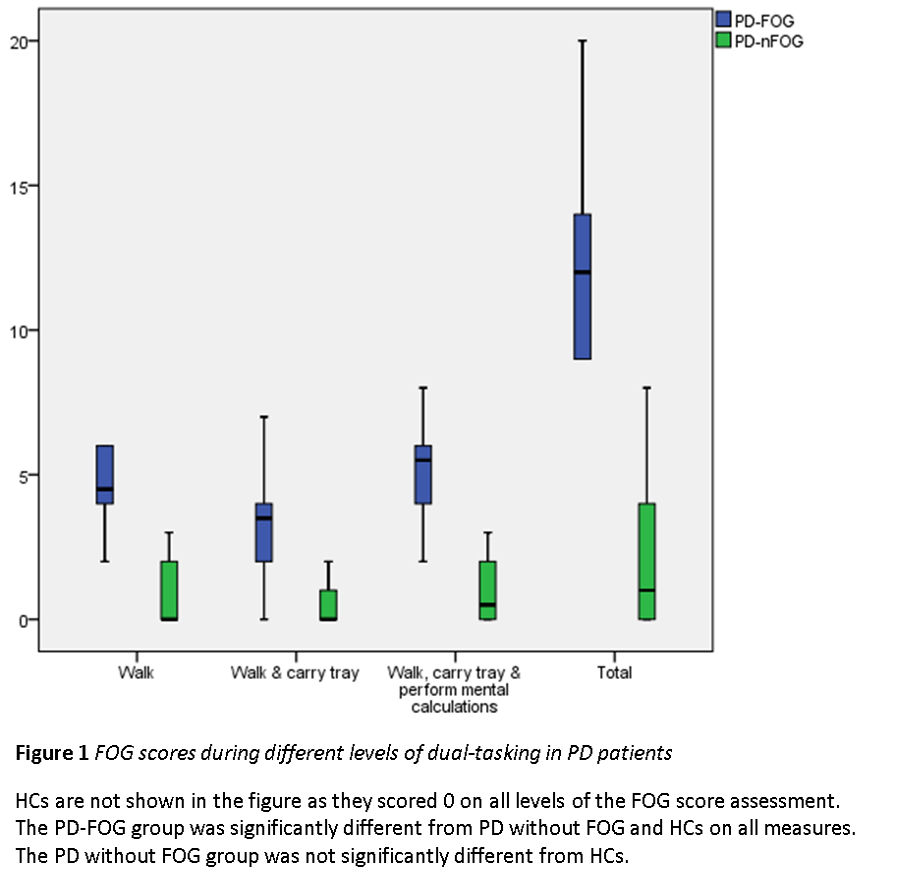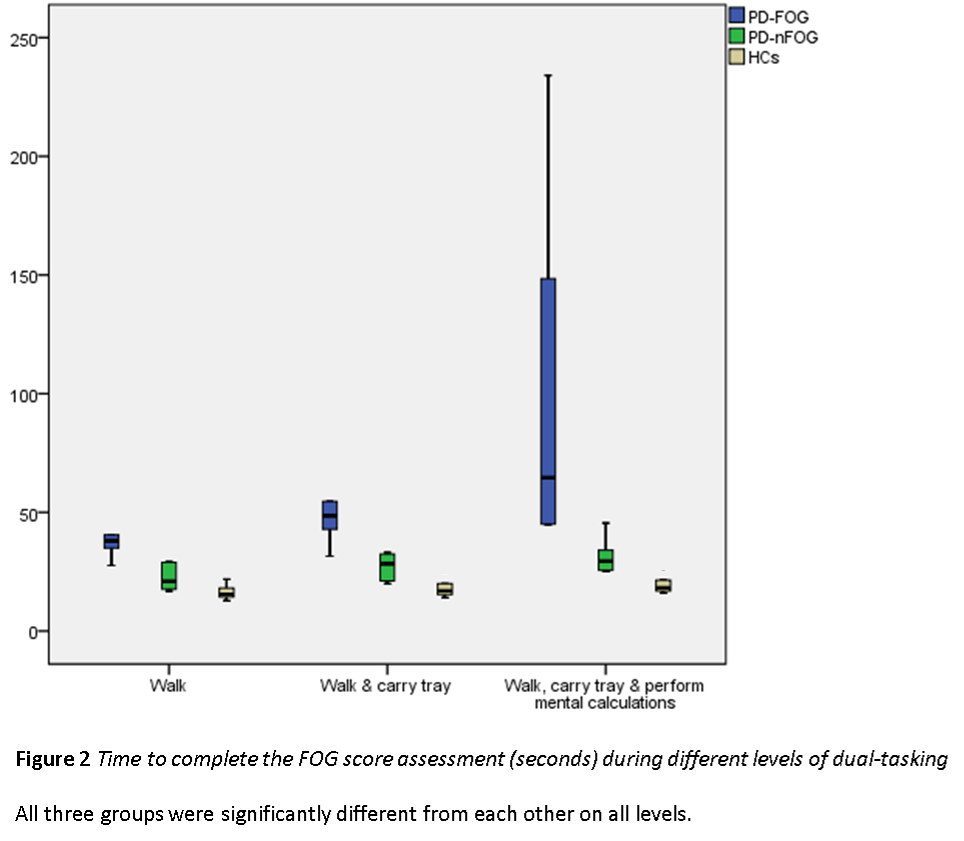Session Information
Date: Monday, October 8, 2018
Session Title: Parkinson's Disease: Cognition
Session Time: 1:15pm-2:45pm
Location: Hall 3FG
Objective: To investigate the relationship between inhibitory control and freezing of gait (FOG) severity in Parkinson’s disease (PD).
Background: Inhibition deficits play a role in PD-FOG. Structural changes implicated in FOG include the locomotor network involving prefrontal cortical areas related to inhibition control. Thus impairments in inhibitory control may affect the severity of FOG as well as the occurrence. In addition, this effect may be altered by the amount of cognitive load during specific situations triggering FOG. Inhibition deficits may be the causal link between dual-tasking and FOG.
Methods: Preliminary analyses included 12 PD patients (6 with FOG, and 6 with no FOG), and 6 healthy controls enrolled in the Center for Neurodegeneration and Translational Neuroscience. D-KEFS Color Word Interference Test was used to assess inhibitory control. FOG severity during levodopa off was determined by the FOG score assessment, which quantifies the severity of FOG in four situations using three levels of dual-tasking [table 1]. Time to complete each level was also calculated. Correlations between inhibitory control performance, FOG score, and time during each level were assessed.
Results: Demographics and overall cognition assessed by Montreal Cognitive Assessment were not different between groups [table 2]. Disease features were similar between the two PD groups in the levodopa off state [table 2]. The PD-FOG group completed the color naming and inhibition test significantly slower than the two other groups, while word reading performance was similar between groups [table 3]. Controls were fastest and had the lowest score (0 in total) in the FOG score assessment, whereas the PD-FOG group was slowest with highest scores on all three levels [figures 1-2]. The time to complete the inhibition test was positively correlated with the time to complete the FOG score assessment and the scores on all dual-tasking levels in all three groups evaluated. There were no significant correlations between measures of inhibition and FOG score assessment in the PD-FOG group.
Conclusions: Inhibitory control was significantly worse in the PD-FOG group compared to PD with no FOG and HCs. However, the severity of inhibitory dysfunction did not correlate with a higher FOG score in the PD-FOG group. Our findings suggest that inhibitory dysfunction is common in PD-FOG, but there may be a plateau effect which prevents correlation with severity of FOG.
To cite this abstract in AMA style:
E. Bayram, S. Banks, J. Longhurst, B. Bluett. The Association Between Inhibitory Control and Freezing of Gait Severity in Parkinson’s Disease [abstract]. Mov Disord. 2018; 33 (suppl 2). https://www.mdsabstracts.org/abstract/the-association-between-inhibitory-control-and-freezing-of-gait-severity-in-parkinsons-disease/. Accessed December 15, 2025.« Back to 2018 International Congress
MDS Abstracts - https://www.mdsabstracts.org/abstract/the-association-between-inhibitory-control-and-freezing-of-gait-severity-in-parkinsons-disease/





